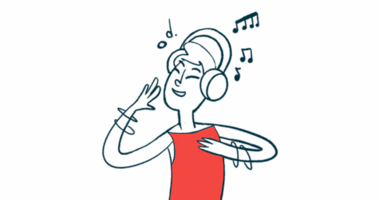Study Supports Approved MS Dosage of Ponvory With No Adjustments
Dose appropriate for all adults with relapsing MS, new data show

The approved dosage of the multiple sclerosis (MS) therapy Ponvory (ponesimod) — 20 mg taken by mouth once daily — is appropriate for all adults with relapsing forms of MS, a new analysis of data from the OPTIMUM Phase 3 trial found.
That analysis showed there was no need for dose adjustments due to clinical or demographic factors, according to researchers, who noted that “sex, age, weight, … race, [disability scores], and previous DMTs [disease-modifying therapies use] were tested.”
The study, “An exposure-response analysis of ponesimod clinical efficacy in a randomized phase III study in patients with relapsing multiple sclerosis,” was published in CPT: Pharmacometrics & Systems Pharmacology. The work was funded by Janssen, which markets Ponvory.
Ponvory is an oral therapy approved for relapsing MS in the U.S. and Europe. It works by preventing immune cells from getting into the brain and spinal cord, thereby lessening the inflammatory attack that drives MS.
Regulatory approvals were supported by data from the OPTIMUM Phase 3 clinical trial (NCT02425644), which compared Ponvory (20 mg/day) against Aubagio (teriflunomide) — an older approved oral MS therapy — in 1,133 adults with relapsing forms of MS.
Study results showed that, compared with Aubagio, Ponvory reduced annualized relapse rates (ARRs) by 30.5%. It also lowered the number of brain lesions by 56%.
Now, a team led by scientists at Janssen conducted statistical analyses of OPTIMUM data to explore the potential link between ARRs, brain lesion activity, and Ponvory exposure — that is, how much of the medication was actually present in a person’s system, as assessed via blood tests.
A significant association was found between higher Ponvory exposure and a greater reduction in active brain lesions. Compared with Aubagio, the predicted drop in active brain lesions with Ponvory ranged from 40% in patients with very low exposure to 71% in those with very high exposure.
While the statistical models for ARRs did not show a direct relationship with Ponvory exposure, relapse rates were significantly associated with active brain lesions in other models. Therefore, by combining all the models, the researchers could estimate the indirect effect of Ponvory exposure on ARRs, as mediated by lesions.
In these models, the predicted reduction in ARRs with Ponvory, relative to Aubagio, ranged from 28% in patients with very low exposure to 34% in those with very high exposure.
“The reduction in ARRs relative to [Aubagio] did not markedly change with [Ponvory exposure], within the range of [therapy] exposures observed at the 20 mg daily dosing,” the researchers wrote.
Additional analyses indicated that the effect of Ponvory exposure was not related to demographic or clinical factors such as age, sex, weight, race, number of inflammatory active brain lesions, disability scores, and/or the previous use of disease-modifying therapies.
As such, “there was no indication for a dose adjustment” based on these factors among patients, according to researchers.
“Taken together, the results of these [exposure-response] analyses indicated that a flat 20 mg dose is appropriate in all adult patients with MS,” the team concluded.







